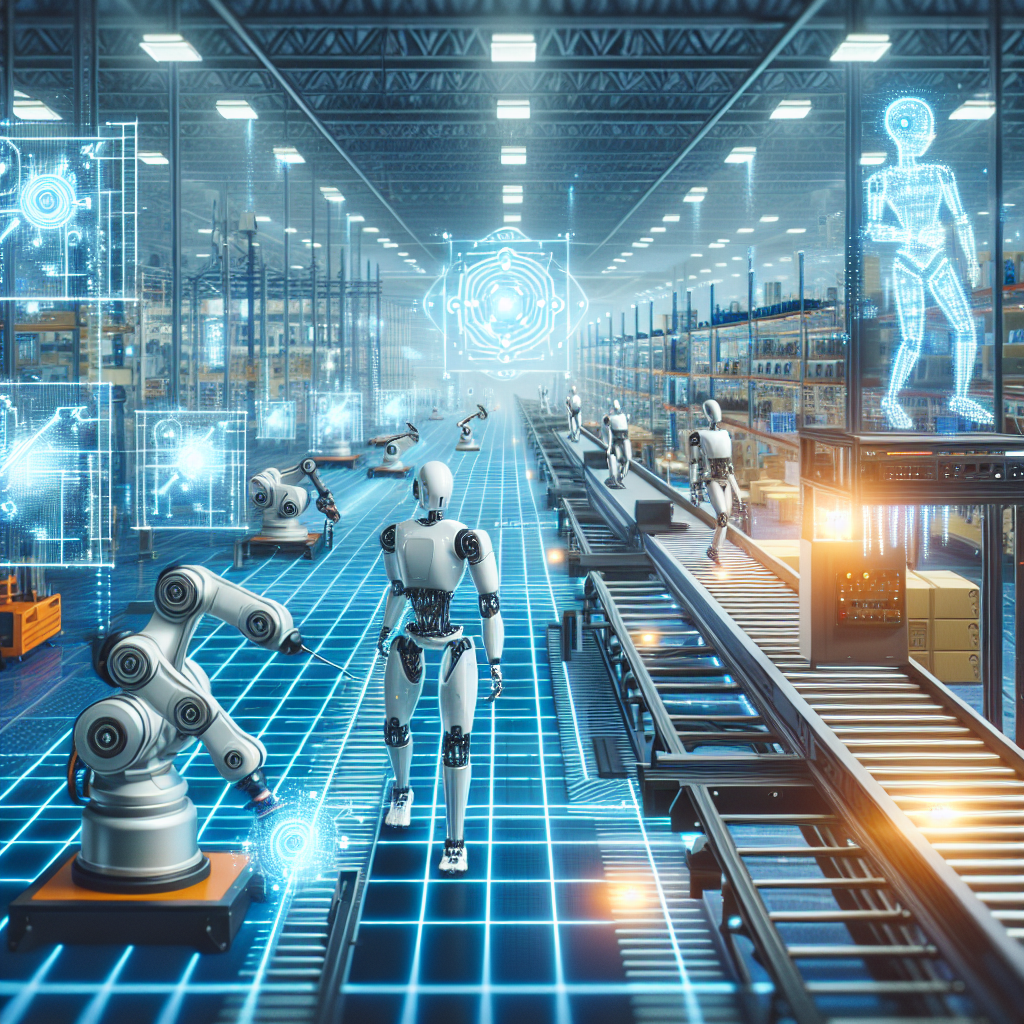AI and Robotics in Manufacturing: Revolutionizing the Industry
The manufacturing industry has always been at the forefront of technological advancements. From the industrial revolution to the rise of automation, manufacturers have constantly sought ways to increase efficiency, reduce costs, and improve overall productivity. In recent years, the integration of artificial intelligence (AI) and robotics has taken the manufacturing sector to new heights, revolutionizing the way products are made and transforming the industry as a whole.
AI and robotics are two interrelated technologies that have the potential to reshape the manufacturing landscape. AI refers to the simulation of human intelligence processes by machines, while robotics involves the design and use of robots to perform tasks traditionally done by humans. When combined, these technologies can automate and streamline manufacturing processes, leading to increased speed, accuracy, and flexibility in production.
One of the key benefits of AI and robotics in manufacturing is their ability to perform repetitive and labor-intensive tasks with high precision and efficiency. This not only reduces the risk of human error but also frees up human workers to focus on more complex and creative tasks. For example, robots can be programmed to perform tasks such as welding, painting, and assembly, which can be time-consuming and physically demanding for human workers.
In addition, AI and robotics can improve the overall quality of products by ensuring consistency and adherence to strict quality standards. Through the use of sensors, cameras, and other advanced technologies, robots can detect defects, monitor production processes in real-time, and make adjustments as needed. This level of precision and control can help manufacturers minimize waste, reduce rework, and deliver products that meet or exceed customer expectations.
Furthermore, AI and robotics can enhance the flexibility and agility of manufacturing operations. With the ability to quickly adapt to changing market demands and production requirements, manufacturers can respond more effectively to fluctuations in demand, shorten lead times, and improve overall supply chain efficiency. This can be especially valuable in industries with high product customization or short product life cycles, where the ability to quickly reconfigure production lines can give manufacturers a competitive edge.
Another significant advantage of AI and robotics in manufacturing is their potential to improve worker safety and well-being. By taking over hazardous or physically demanding tasks, robots can help reduce the risk of workplace injuries and alleviate the strain on human workers. This can lead to a safer and more ergonomic work environment, resulting in increased employee satisfaction and retention.
Despite the numerous benefits of AI and robotics in manufacturing, there are also challenges and concerns that need to be addressed. One of the main challenges is the initial cost of implementing these technologies, which can be significant for small and medium-sized manufacturers. However, as the technology continues to advance and become more accessible, the cost of adoption is expected to decrease over time.
Another concern is the potential impact of AI and robotics on the workforce. While these technologies can augment human capabilities and create new job opportunities in areas such as programming, maintenance, and supervision, there is also the risk of job displacement for workers whose tasks are automated. It is important for manufacturers to proactively address these concerns by investing in employee training and upskilling programs to ensure a smooth transition to the new technological landscape.
In conclusion, AI and robotics have the potential to revolutionize the manufacturing industry by increasing efficiency, improving quality, enhancing flexibility, and promoting worker safety. As these technologies continue to evolve and become more integrated into manufacturing processes, manufacturers will need to adapt and embrace the opportunities that AI and robotics present. By leveraging the power of AI and robotics, manufacturers can stay ahead of the competition, drive innovation, and transform the way products are made.
FAQs:
Q: How can AI and robotics benefit the manufacturing industry?
A: AI and robotics can benefit the manufacturing industry by automating repetitive tasks, improving quality control, enhancing flexibility, and promoting worker safety.
Q: What are some examples of AI and robotics applications in manufacturing?
A: Examples of AI and robotics applications in manufacturing include automated assembly lines, robotic welding, quality inspection systems, and material handling robots.
Q: What are the challenges of implementing AI and robotics in manufacturing?
A: Challenges of implementing AI and robotics in manufacturing include the initial cost of adoption, potential job displacement, and the need for employee training and upskilling programs.
Q: How can manufacturers address the concerns related to AI and robotics in the workforce?
A: Manufacturers can address concerns related to AI and robotics in the workforce by investing in employee training and upskilling programs, creating new job opportunities, and ensuring a smooth transition to the new technological landscape.

